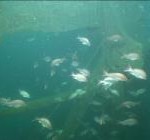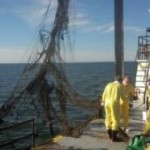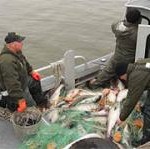I was getting my every-other-Saturday haircut from Mr. Ralph one fall when the conversation turned to squirrel hunting. One of the old men sitting around the checker board said he wanted a dog that would tree squirrels. I said Hal had one and Mr. Ralph said “I didn’t know Tippy would tree squirrels.”
That is what I love about growing up in a small town and why I am so thankful for my childhood there. Not only did the local barber know which friend I was talking about by his first name, he knew his dog’s name, too.
I grew up in Dearing, GA on Highway 78 near Augusta. We had a caution light on the main highway and there were six stores in the town. You could buy everything you needed in each one, including gas, fresh meat, clothes, guns, fishing tackle and canned goods. They were typical country stores of the 1950s and the owners knew everyone that came through the door.
My house was a half mile from the center of town, right on the “city” limits. The sign was right in front of my house on Iron Hill Road and we had 15 acres. On it were seven chicken houses with 11,000 laying hens, a hog house with sows and nearby a pen to raise out the young pigs, and fields with ponies and cows.
One property line had a branch running near it and where I swam and caught fish. We also tried to dam it up every summer, working like beavers but not nearly a good at dam building as they are. I also explored that branch from end to end and knew every hole and stump in it, and could tell you where a fish would hit my home-made chicken feather flies.
That was a simpler time. There were no video games and TV was black and white with two channels available to us. Kids spent their free time outside when not in school or doing chores. We hunted, fished, shot guns, build forts and tree houses, dammed creeks and roamed the woods and fields.
No one was surprised to see a kid with a gun. Many days I would hit the woods at the creek below my house on Saturday morning and hunt up the creek with my .22 or .410. The creek crossed Highway 78 just outside of town and I would get there at lunch time. Then it was time to pick a store, go in and lean my rifle or shotgun in the corner and get a cold drink from the ice box and a can of sardines, Vienna Sausage or potted meat and have lunch. A box of saltines were always open and available to anyone buying something to go with them.
After lunch I would sometimes hunt back down the creek or hit the road and head home. Walking down Iron Hill Road with a rifle did not draw a second glance, but everyone would wave. I could stop at Harold’s house on the way. He was the only other boy in town my age. We started kindergarten together and graduated from the University of Georgia together 17 years later. Hal was two years older than me.
My father was principal of Dearing Elementary School and my class had 27 students in it. We had basically the same group from first through eight grade but then went to High School in Thomson eight miles away. Thomson High was huge after Dearing Elementary. My class there had just over 150 in it and grades nine through 12 had over 500 students!
All the kids went to church at least three days a week. Sunday mornings we were in Sunday School then church and evenings found us in Training Union and then church. Prayer meeting was every Wednesday and RA’s for boys and GA’s for girls met on Monday nights. We boys talked a lot about hunting and fishing and the highlight every summer was a camping trip or two with all the boys and three or four of the men.
I am very thankful for my youth and wish every kid could have the kind of experiences I had back then. I think there would be a lot less crime and drug use. We didn’t have time for such foolishness. The outdoors tends to do that to you, and you learn respect for others and nature when you are spending time in the woods.
Kids still have opportunities to hunt and fish but almost always have to be accompanied by an adult in today’s crazy world. Try to help them go hunting and fishing any time you can.





